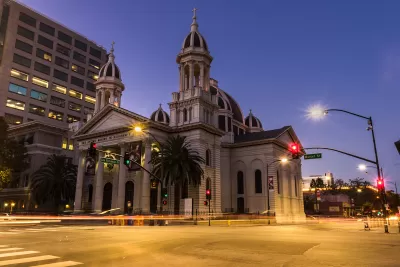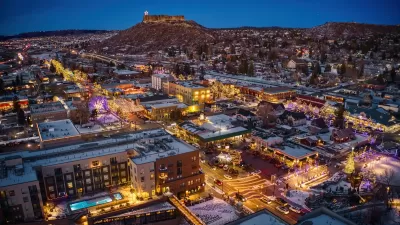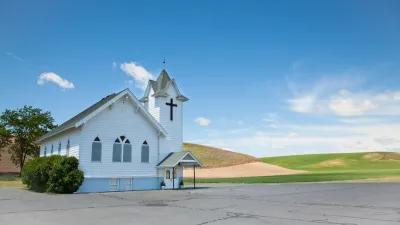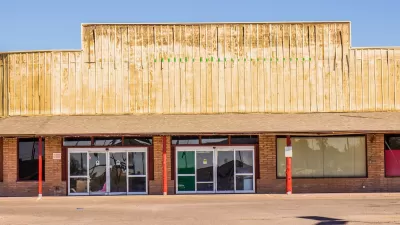More churches and municipalities are saying ‘Yes in God’s Backyard.’

The growing ‘Yes in God’s Backyard’ movement is gaining support in faith-based communities around the country, reports Rachel M. Cohen in Vox, as more churches and faith institutions find themselves called to make an impact on the affordable housing crisis. According to Cohen, “The Terner Center for Housing Innovation at UC Berkeley estimates that, across California, there are more than 47,00 acres of land owned by faith-based organizations that could potentially be developed into affordable housing.”
“And amid a thicket of local land-use regulations that complicate the construction, some elected officials are looking for ways to nudge these efforts along.” Cities like San Diego have adjusted their zoning laws to allow places of worship to build housing on their properties, and California followed suit with the statewide Affordable Housing on Faith Lands Act.
Faith leaders are also interested in housing because congregations are declining, making church properties less useful. “Some religious institutions want to build housing as a new way to welcome strangers and care for poor people in their midst, while others are thinking more about their overall institutional legacy, especially as their membership continues to shrink.”
FULL STORY: Yes in God’s backyard? This housing solution may be the answer to your prayers.

Trump Administration Could Effectively End Housing Voucher Program
Federal officials are eyeing major cuts to the Section 8 program that helps millions of low-income households pay rent.

Planetizen Federal Action Tracker
A weekly monitor of how Trump’s orders and actions are impacting planners and planning in America.

Ken Jennings Launches Transit Web Series
The Jeopardy champ wants you to ride public transit.

Washington Legislature Passes Rent Increase Cap
A bill that caps rent increases at 7 percent plus inflation is headed to the governor’s desk.

From Planning to Action: How LA County Is Rethinking Climate Resilience
Chief Sustainability Officer Rita Kampalath outlines the County’s shift from planning to implementation in its climate resilience efforts, emphasizing cross-departmental coordination, updated recovery strategies, and the need for flexible funding.

New Mexico Aging Department Commits to Helping Seniors Age ‘In Place’ and ‘Autonomously’ in New Draft Plan
As New Mexico’s population of seniors continues to grow, the state’s aging department is proposing expanded initiatives to help seniors maintain their autonomy while also supporting family caregivers.
Urban Design for Planners 1: Software Tools
This six-course series explores essential urban design concepts using open source software and equips planners with the tools they need to participate fully in the urban design process.
Planning for Universal Design
Learn the tools for implementing Universal Design in planning regulations.
Heyer Gruel & Associates PA
Ada County Highway District
Institute for Housing and Urban Development Studies (IHS)
City of Grandview
Harvard GSD Executive Education
Toledo-Lucas County Plan Commissions
Salt Lake City
NYU Wagner Graduate School of Public Service





























